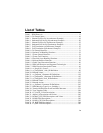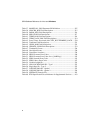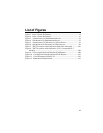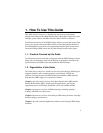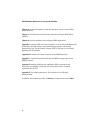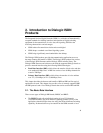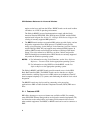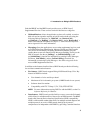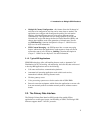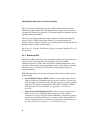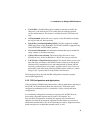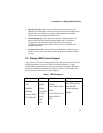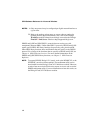2. Introduction to Dialogic ISDN Products
5
Both the BRI/SC and the BRI/2 boards provide access to ISDN Layer 3
Supplemental Services. These services can be divided into two categories:
• Hold and Retrieve allows the application to place calls on hold, to retrieve
held calls and to respond to requests to hold or retrieve held calls using the
following Dialogic functions: cc_HoldCall( ), cc_RetrieveCall( ),
cc_HoldAck( ), cc_HoldRej( ), cc_RetrieveAck( ), and cc_RetrieveRej( ).
Refer to the function descriptions in Chapter 5. ISDN Function Reference
and to Appendix D for more information.
• Messaging allows the application to access other supplemental services, such
as Called/Calling Party Identification, Message Waiting and Call Transfer.
The services are invoked by formatting information elements (IEs) and
sending them as non-call related Facility Messages (SndMsg_Facility) to the
PBX or network. See the cc_SndMsg( ), cc_SndNonCallMsg( ), and
cc_SetInfoElem( ) functions for information on sending Facility Messages.
See the cc_GetCallInfo( ) and cc_GetNonCallMsg( ) functions for
information on retrieving Facility Messages. Also refer to Appendix D for
more on BRI Supplemental Services.
In addition to the features described above, BRI/2 boards provide the following
fax and data communications features:
• Fax features - BRI/2 boards support Dialogic DSP-based Group 3 Fax. Key
features of DSP Fax include:
• Four channels of voice and fax per board
• Maximum of 16 fax channels per system (4 BRI/2 boards in one system)
• Software-based fax modem
• Compatibility with ITU-T Group 3 (T.4, T.30), ETSI NET/30
NOTE:
For more information on using DSP Fax with the BRI/2, see the Fax
Software Reference for Windows.
• Data features - BRI/2 boards provide link layer access, across the B channel,
which allows for reliable transfer of data across an ISDN network. The BRI/2
boards offer Network Device Interface Specification (NDIS) compatibility.
NDIS is a Microsoft® standard that allows for multiple network adapters and
multiple protocols to coexist. NDIS permits the high-level protocol
components to be independent of the BRI/2 by providing a standard interface.



